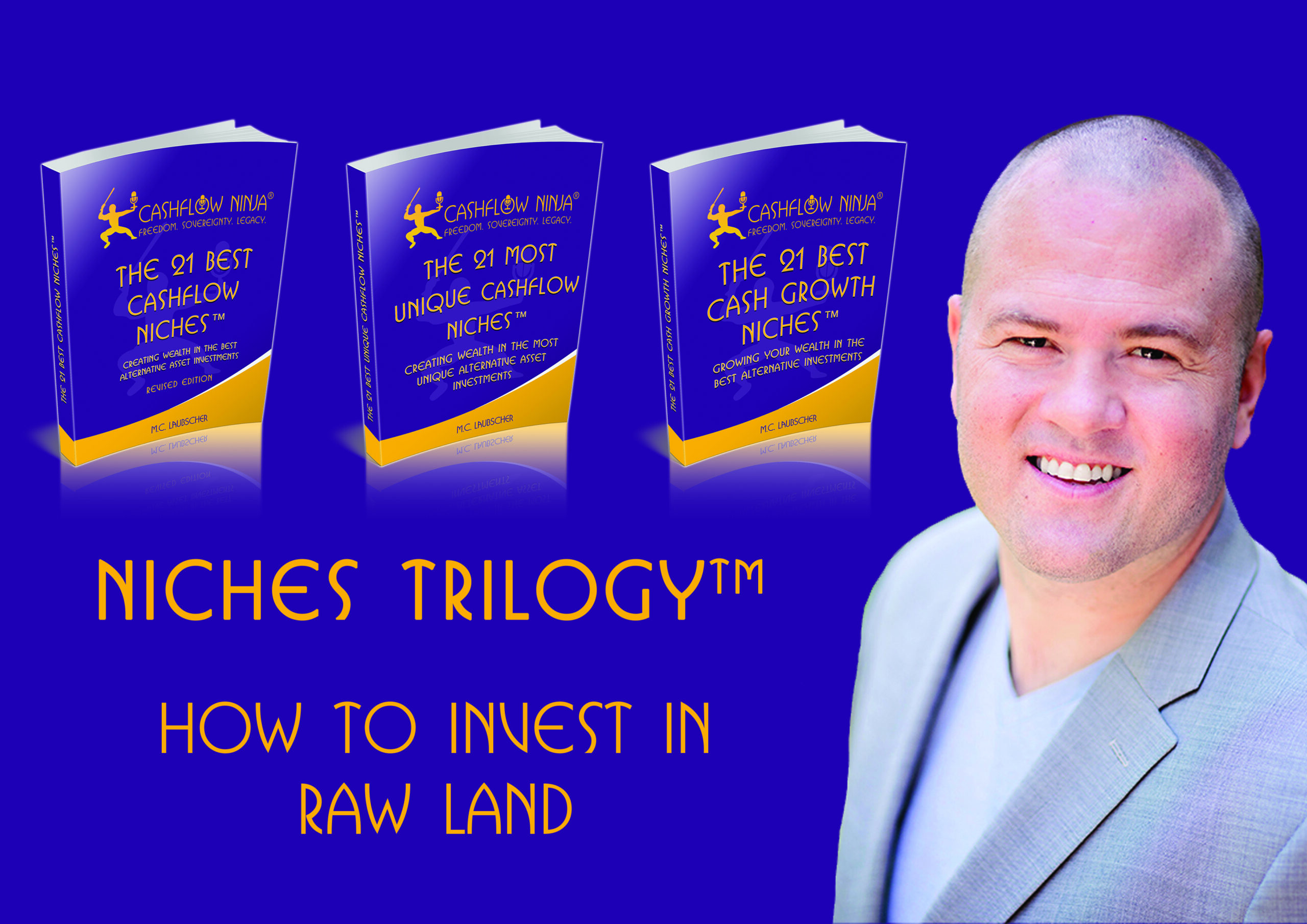
Raw land refers to undeveloped property without any buildings or site improvement. It is land in its natural state, used for agricultural purposes, left to lie fallow, or held for future development. Investing in raw land is a strategy that can offer several benefits for investors.
Why Invest In Raw Land?
Raw land can significantly increase in value over time, especially if it’s in the path of development or if there’s a future use for it that can be realized. This potential for appreciation is a primary draw for investors.
Investors may purchase raw land to develop it in the future. Depending on zoning laws and market needs, this could involve building commercial properties, residential homes, or industrial facilities.
Generally, raw land costs less than developed property, making it a more accessible investment for those with less capital.
Since there are no buildings to maintain, property taxes and the costs associated with owning raw land are typically lower than developed property.
Adding raw land to an investment portfolio can provide diversification, as its value only sometimes correlates directly with other asset classes like stocks or bonds.
Some investors strategically buy raw land for long-term investment, betting the land will become more desirable.
Depending on the jurisdiction, tax advantages may be associated with owning raw land, such as lower property taxes or opportunities for agricultural tax credits if the land is used for farming.
Raw land can be used for various purposes that align with investor interests or societal needs, such as organic farming, solar farms, or wind energy projects.
Real estate, including raw land, is often considered a good hedge against inflation, as it tends to maintain its value when the purchasing power of currency declines.
The Raw Land Ecosystem
The raw land sector, a distinctive real estate market area, brims with potential for prospective investors. For those pondering an investment in this unique space, it’s vital to grasp the ecosystem’s intricacies and stay attuned to current trends.
So, who are the key players in this arena? There are landowners and sellers, a diverse group ranging from individual landowners and farmers to corporations and even government entities looking to offload their undeveloped land. Then, you have investors and buyers on the other side of the equation. This group encompasses everyone from individual investors and real estate developers to specialized land acquisition firms and trusts.
In between these two groups are the facilitators. Real estate brokers and agents specialize in land transactions, guiding buyers and sellers through the labyrinthine world of land deals. Land planners and surveyors assess the land’s potential and assist in development planning, tackling zoning considerations, and ensuring land use compliance. Environmental consultants play a crucial role, too, in evaluating the potential environmental impact of any proposed land development and confirming regulatory compliance.
Then, we have legal and financial professionals. These experts steer investors through the legalities and economic aspects of land transactions, including the implications for taxes and financing. Government and regulatory bodies are also part of the mix, overseeing everything from land use and zoning to environmental impact and property rights. And let’s remember the agricultural sector. Farmers and farming businesses often rent or buy raw land for their operations.
But what about the current trends shaping raw land investing?
Firstly, sustainable and green development is capturing growing interest. Investors are increasingly snapping land for projects like organic farming, conservation efforts, and renewable energy sources like solar and wind farms.
As cities expand, raw land on the outskirts becomes prime real estate for development. The development of vacant parcels within already built-up areas is also gaining traction.
Then there’s the concept of pre-development land banking, where investors buy land in anticipation of its value increasing due to future development.
Investing in land for recreational purposes, such as private hunting grounds or campgrounds, has increased popularity as people crave more outdoor experiences.
With housing shortages plaguing many areas, raw land is targeted for residential development, particularly in regions experiencing high growth.
Technology is leaving its mark, too, with advances driving up demand for land capable of hosting facilities like data centers and logistics hubs.
The rise of remote work has sparked interest in rural land as people seek a lifestyle change and more space away from traditional urban centers.
And let’s not overlook the influence of economic factors. Fluctuating interest rates and inflation worries can sway land investment decisions, impacting borrowing costs and the appeal of real estate as a hedge against inflation.
How To Grow Cash
Investing in raw land can be rewarding, with various strategies available to maximize profits. Firstly, there’s the ‘buy and hold’ approach. This involves acquiring land with the expectation that its value will appreciate over time, allowing for a profitable sale in the future.
Next, we have land development. Here, the idea is to enhance the land’s value by adding infrastructure such as roads, utilities, or buildings. Once developed, the land can be sold or leased, providing a source of ongoing income.
Then there’s a subdivision, a strategy that divides larger parcels of land into smaller lots. These individual lots are typically easier to sell and often command a higher collective price than the original parcel.
Alternatively, you might consider land leasing. This strategy involves renting out the land for various purposes, such as farming, grazing, or billboard advertising, generating a steady income stream.
Lastly, there’s land flipping. This strategy revolves around buying land at a bargain price and quickly reselling it at a profit, capitalizing on market inefficiencies or minor improvements.
Agricultural use could be a viable strategy if the land is suitable for farming. Investors can cultivate or lease the land to farmers, generating income from agricultural production or lease payments.
Natural resources present another avenue for profit. If the land harbors valuable resources such as timber, minerals, oil, or water, investors can harvest these resources or lease the extraction rights to other companies.
Transforming raw land into a recreational area, like a campground or hunting ground, offers another potential profit strategy. By charging for access or membership, investors can generate income.
However, several factors can impact the profitability of these strategies. Market demand, driven by economic growth, population increases, and regional development plans, can significantly influence land values. The location of the land, mainly if it’s in the path of development or near expanding urban areas, can also play a crucial role.
When land is rezoned for a more lucrative use, zoning changes can substantially increase its market price. Inflation, while eroding purchasing power, can drive up the nominal value of tangible assets like land.
Cost management is another critical factor. Keeping the costs of owning land low, such as property taxes and maintenance, can help maintain profitability. Finally, aligning purchases and sales with economic cycles can maximize profits.
How To Lose Money
Investing in raw land can be a lucrative venture, but it has risks. If not managed appropriately, these risks can result in financial losses. What might these pitfalls look like?
Picture this: you’ve invested in a piece of land, expecting its value to appreciate over time. But then, economic downturns hit, or community growth plans take an unexpected turn. Suddenly, you’re not seeing the return on investment you had anticipated.
And what about liquidity? Unlike residential or commercial properties, raw land typically sells more slowly. Imagine needing to offload your land fast and settle for a lower price because there aren’t enough buyers in the market. That could result in a significant loss.
Now, let’s talk about carrying costs. Sure, raw land often has fewer expenses than developed properties. But remember ongoing costs like property taxes, insurance, and maintenance. Without any income from the land, these expenses can start eating into your profits.
Have you ever thought about zoning and land-use restrictions? Say you buy a piece of land with grand development plans, only to find out later that zoning laws or hidden limitations prevent you from realizing those plans. That could certainly throw a wrench in your investment strategy.
And then there’s the risk of overpaying for land. It’s easy to get carried away with optimistic projections, but if the market doesn’t support your valuation, you could end up in the red.
Imagine having a grand vision for developing your land, but funding falls through, the community pushes back, or market demand shifts. Your land remains undeveloped, and its value stagnates.
Unearthed environmental issues like soil contamination or protected habitats can also throw a spanner in the works. These problems could lead to expensive cleanup operations or halt development, impacting your land’s value.
Take advantage of access, too. Improving the land could become an exorbitant expense without proper roads or utilities. And with access, the land’s value could stay stable.
Market timing is another factor to consider. Buying land at the height of a real estate boom or on the cusp of a recession could lead to losses if land values in the area subsequently decrease.
Financing costs can also pose a risk. If your land purchase is financed, interest payments could weigh heavily on your finances, particularly if the land doesn’t appreciate as quickly as you’d hoped.
Legal disputes over titles or boundaries could lead to unexpected expenses and potential losses.
And let’s remember the opportunity cost. Money tied up in raw land isn’t available for other investments that offer a higher return or income stream.
Finally, inadequate due diligence could lead to nasty surprises down the line. Failing to conduct a thorough land survey before purchasing could unearth issues that diminish the land’s usability and value.
Positives & Negatives Of Raw Land
Positives:
Potential for Appreciation: Raw land can significantly increase in value over time, especially if it’s in the development path or its use can be changed to something more profitable.
Flexibility for Future Use: Investors can hold the land for various future uses, such as development, sale, or leasing for agricultural or commercial purposes.
Lower Acquisition Costs: Generally, raw land costs less than developed property, making it an accessible entry point for investors.
Lower Property Taxes: Because raw land is often valued less than improved real estate, the property taxes are usually lower.
Less Competition: There may be less competition for buying raw land than other real estate investments, allowing for better deals.
Simplicity: Owning raw land generally involves less management and fewer complications than developed property, which can have demanding tenants or extensive maintenance.
Diversification: Adding raw land to a portfolio can diversify an investor’s holdings and reduce risk.
Negatives:
Lack of Immediate Income: Unlike rental properties, raw land typically only generates immediate income if leased for agricultural use.
Illiquidity: Raw land can be rugged to sell quickly, which might be better for investors who need or want quick access to their capital.
Carrying Costs: Despite no structures to maintain, raw land can still incur costs such as property taxes and possibly association fees.
Development Challenges: Developing raw land can be expensive and time-consuming, with investors often facing regulatory hurdles, zoning laws, and infrastructure issues.
Opportunity Cost: Money invested in raw land could be used for other investments with quicker or more substantial returns.
Market Volatility: The value of raw land can fluctuate due to factors like the economy, interest rates, and local real estate market conditions.
Environmental Risks: There could be unknown ecological issues that can restrict land use or require costly cleanup.
Accessibility: Land without proper access to roads and utilities is less valuable and costlier to develop.
Legal Issues: The potential for disputes over land boundaries, easements, and titles can lead to legal costs and headaches.
Investment Opportunity Filter™
The Investment Opportunity Filter™ evaluates an investment opportunity based on cashflow, tax benefits, appreciation, and the leverage it provides.
Raw Land scores a 2/4 with The Investment Opportunity Filter™.
Raw Land can increase in value significantly and allows for leveraging others’ skill sets, capabilities, networks, and capital.
Download all the Niches Trilogy Books:
The 21 Best Cashflow Niches
Digital: https://www.
Audio: https://podcasters.spotify.
The 21 Most Unique Cashflow Niches
Digital: https://www.
Audio: https://podcasters.spotify.
The 21 Best Cash Growth Niches
Digital: https://www.
Audio: https://podcasters.spotify.
Listen To Cashflow Ninja Podcasts:
Cashflow Ninja
https://podcasters.spotify.
Cashflow Investing Secrets
https://podcasters.spotify.
Cashflow Ninja Banking
https://podcasters.spotify.
Share This
Related

898: Tom Dunkel: The Wealth Builders Playbook
My guest in this episode is Tom Dunkel. Tom Dunkel brings more than 30 years of experience in real estate, finance, and investing to his role as Managing Director of Eagle. Known for his disciplined approach and unwavering alignment with investors, Tom personally invests in every deal he presents, ensuring absolute trust and shared outcomes…

897: Eugene Shatsman: How To Grow & Scale Your Business Right Now
My guest in this episode is Eugene Shatsman. Eugene is the Managing Partner of National Strategic Group. Eugene teaches business strategy, consumer behavior, marketing, and what all of us want – how to drive more business into our businesses. His team at National Strategic has over 100 people, and they do a tremendous amount of…

896: Chris MacIntosh: Opportunities Around The Globe Right Now
My guest in this episode is Chris Macintosh. Chris has founded and built several multi-million dollar businesses in the investment arena, including overseeing the deployment of over $30m into Venture Capital opportunities and advising family offices internationally. Before this, Chris built a career at Invesco Asset Management, Lehman Brothers, JPMChase, & Robert Flemings. Interview Links:…
